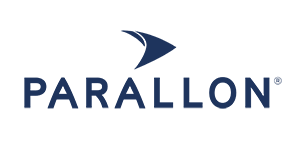Revenue integrity — minding the gaps between clinical operations, coding and billing
Forward-looking health systems are beginning to create newly defined roles and entire departments dedicated to revenue integrity. The goal is to bridge the gaps that naturally form between clinical operations, coding teams and the business office.
Revenue integrity focuses on better coding and charge capture, in particular, to reduce the risk of noncompliance, optimize payment and minimize the expense of fixing problems downstream with claim edits.
In an industry where “no margin means no mission,” revenue integrity is emerging as a tool and initiative to enhance margin and preserve the mission of health systems.
What is revenue integrity?
In 2004, revenue integrity began to evolve as health systems moved toward value-based and risk-adjusted payment models. When Medicare added hierarchical condition categories (HCCs) to assess patient risk as part of the consideration for payment, the need to be precise with coding and charge capture increased.
Correct coding and charge capture require coordination between clinicians, revenue generating departments, compliance staff and billers, which can tax traditional revenue cycle management processes and technologies.
While organizations may pursue a variety of goals via revenue integrity — improved revenue capture, reduction of accounts receivable days, improvement of documentation and charge redundancy, charge process efficiency, responses to third-party charge audit requests, billing system edit resolution, workflow optimization — a central goal of any program will be the development of congruous clinical and operational workflows that produce correct charge capture the first time, without the need for repeated edits.
Why do you need a revenue integrity department or director?
Even as revenue cycle issues continue to be an area of intense focus for many healthcare organizations, revenue integrity remains a new area to embed into revenue cycle operations.
According to a recent HFMA survey of 125 healthcare finance executives, 22% identified revenue integrity as the leading priority for their organizations, but fewer than half (44%) have established revenue integrity programs. Not surprisingly, many are still tinkering with how revenue integrity fits into their organizations.
Revenue integrity departments have a definite ROI in terms of revenue capture and risk avoidance. Furthermore, a revenue integrity department or director can help lead enterprise-wide efforts to coordinate elements of claims processing and charge capture, acting as the connective tissue between clinical operations and billing by optimizing the workflows between these often-divided areas. The knowledge needed to accomplish this includes:
- Regulatory changes that impact charging practices
- Quality assurance statistics
- Tracking, trending and analysis of unbilled reports and charge review results
- Clinical operations and billing office workflows
- Understanding clinical charging technology and how it impacts revenue
- Internal audit activities related to the revenue cycle
The processes and tools used to support revenue integrity include workflow optimization, compliance, clinical documentation improvement, data analytics and business intelligence.
Even though its constituent concepts are relatively familiar, and there is no well-established industry standard for program design, the National Association of Healthcare Revenue Integrity (NAHRI), offers certification credentials in the subject and provides resources for launching revenue integrity. NAHRI resources include business proposals for making the case for revenue integrity to leadership and developing action plans, project spreadsheets and organizational charts.
Organizations have myriad options when it comes to designing their revenue integrity strategies. Whether the creation can be spearheaded by a single director or necessitates adding a new department will vary from one organization to the next.
What are next steps?
Today’s healthcare organizations — feeling the pinch of shrinking top and bottom lines, increasing documentation scrutiny from payers and regulators, along with dozens of other pressures — understand that there is an inherent evolutionary danger in waiting too long to act.
As they assess how to fit revenue integrity within their organizations, providers would be wise to start with the familiar and work upstream from there. Most either have revenue cycle departments of their own or partner organizations. For hospitals and healthcare systems, these partners and/or team members will be invaluable in identifying initial steps.
One vital advantage of revenue integrity is that it is an entirely evolutionary step, meaning that the need for a complete operational overhaul is unlikely. Consequently, organizations can push forward at their own pace while also keeping an eye on remaining current with best practices as they continue to emerge.
For more information, contact Parallon.






